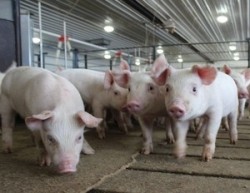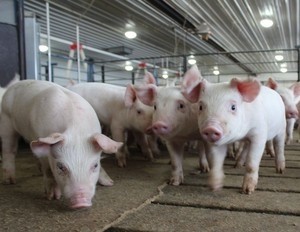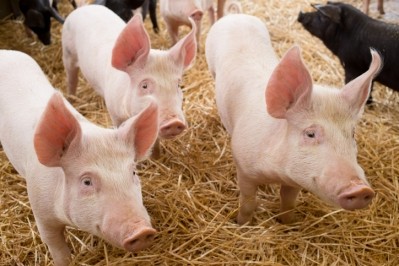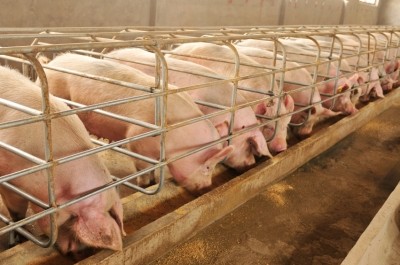Chinese researchers find alfalfa saponin extract can boost the antioxidant system of weaned piglets

“Dietary addition of ASE up to 15 grams per kilogram had the potential to improve piglet growth,” said lead authors CZ Wang and YH Shi, based at Henan Agricultural University in Zhengzhou.
However, writing in this month’s edition of Livestock Science, they say further research is required to determine the exact composition of ASE needed for such an effect and to fully understand the mechanisms by which it increases the antioxidant levels in piglets.
Weaning stress
Abrupt weaning is a source of stress for animals, which causes a wide range of physiological and behavioral responses. After weaning, the concentrations of glutamine, and vitamins E and A in the blood decline and the antioxidant capacity of the animal body after weaning can decrease.
Lower feed utilization efficiency, growth retardation, diarrhea, and some diseases can result, say the authors.
There is significant industry interest, therefore, in feedstuffs that strengthen the antioxidant system of weaned piglets.
And the Chinese authors say a paucity of information on the use of alfalfa saponins in the diets of livestock was the trigger for this present study.
The use of alfalfa has been shown to improve growth performance and reproduction capability of animals, as well as enhancing feed utilization, said the scientists.
Saponins, meanwhile, have been known to possess properties useful to human and animals, including cholesterol lowering activity, antioxidant, antiviral, immunostimulant, hypo-glyceamic and antidiabetic activity, they added.
Some early work indicates that saponins were involved with ruminant bloat; however, later research showed that saponins constituted only one of a combination of additional factors in the pathogenesis of pasture bloat, said the Chinese team.
The authors note several current and potential applications of yucca and Quillaja saponins in animal nutrition, and their effects on the performance of animals are well documented. “However, the results obtained have been inconsistent.”
The authors theorized that the effects of saponins may depend on their level in the diets, the type of saponins used, as well as species of animal involved in the trial.
Study details
A total of 96 piglets weaned at 28 days of age were randomly assigned to four treatments, based on litter, live weight, and sex, said the Chinese team.
Diets containing zero, five, 10, and 15 grams of ASE per kg were fed to piglets for 30 days.
The amounts of feed offered and residue were recorded daily, and the average daily feed intake (ADFI) was calculated.
At the end of the study, the piglets were weighed, and the average daily gain (ADG) was calculated. At the same time, two piglets were selected from each replicate pen for blood and tissue analysis, reported the team.
There was a linear improvement in final body weight, average daily gain and daily feed intake as the level of ASE in pig diets increased, found the authors.
Indicators of antioxidant activity
The SOD, GSH-Px, and CAT are the main antioxidant enzymes in the body, which contribute to the antioxidant activity, say the researchers.
Decreased activity of these enzymes can induce increased free radicals, which cause the oxidation of proteins, lipids, and DNA, leading to cell injury and death, explained the researchers.
Increased MDA, one of the most frequently used indicators of lipid peroxidation, can be caused by a hike in the formation of those radicals, they added.
“In the present study, dietary addition of ASE increased GSH-Px and SOD activity in serum and tissues linearly, and CAT activity linearly or quadratically, as well as decreased MDA content linearly, which indicated that ASE could improve the antioxidant ability of weaned piglets by increasing [the] activity of some antioxidant enzymes,” said the scientists.
The Chinese researchers say their results were consistent with previous trials indicating that saponins from ginseng and soybean could elevate SOD activity and reduce lipid peroxide and MDA levels in [the] blood, heart, brain, and liver of rats, which may promote the ability of the body to scavenge free radicals and prevent the action of lipid peroxidation.
Source: Livestock Science Volume 167, September 2014, Pages 257–262
DOI: 10.1016/j.livsci.2014.05.032
Title: Effects of alfalfa saponin extract on growth performance and some antioxidant indices of weaned piglets
Authors: Y.H. Shi, J. Wang, R. Guo, C.Z. Wang, Z.B. Yan, B.Xu, D.Q. Zhang















